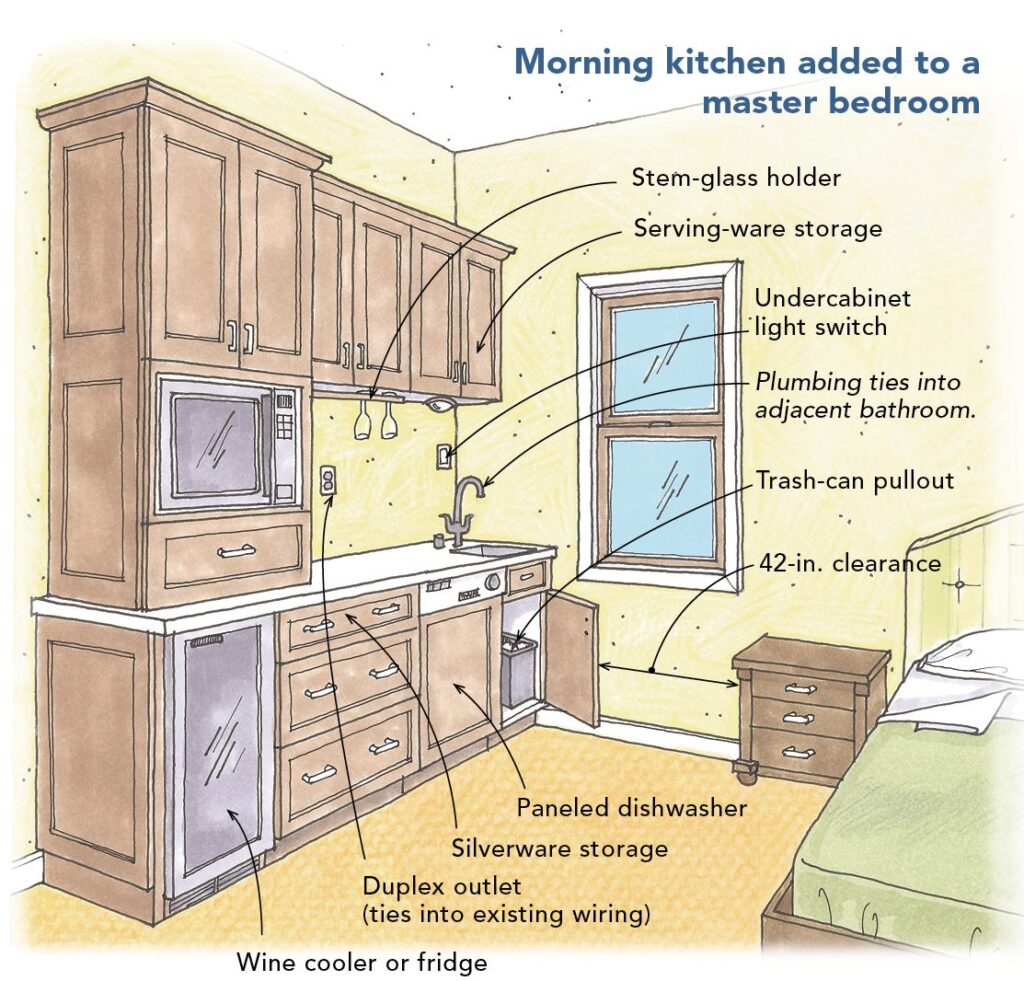
Are you familiar with the concept of a morning kitchen? If not, you’re in for a delightful surprise. Let’s first clear the air about some common misconceptions. Morning kitchens are often thought to be exclusive luxuries found only in sprawling, opulent residences. But that’s not the case. These versatile spaces are not bound by the size or grandeur of a home, nor are they as costly as many assume. Integrating a morning kitchen into a new home build can be pretty cost-effective.
So, what’s a morning kitchen? It’s a convenience hub ranging from a modest setup to an expansive, fully-equipped space. The smaller version might feature essentials like a mini fridge, coffee maker, storage for pantry items and serving ware, a waste bin, and a tray for easy cleanup. Picture a compact but efficient area that streamlines your morning routine.
On the other end of the spectrum, a larger morning kitchen echoes the functionality of a butler’s pantry, spanning 10 to 14 feet with amenities like a dishwasher, sink, built-in coffee system, microwave, specialized refrigerators, an ice maker, and ample storage for a variety of serving ware. These are typically envisioned for new, custom homes.
For most, the ideal morning kitchen is somewhere in between. It’s wise to position it adjacent to kitchen or bathroom walls to utilize existing plumbing, aiming for a width of 7 to 8 feet. This size accommodates standard appliances and complies with space guidelines for ease of use.
When planning, a minimum footprint for your morning kitchen should be 5 feet 6 inches deep and 4 feet wide. This respects the standard cabinet depth and provides enough room for a mini-fridge and additional storage, following the National Kitchen & Bath Association’s recommendations for workspace.
Now, let’s talk plumbing. If your morning kitchen design includes water-dependent appliances, connecting to existing plumbing lines is practical. Consider the kitchen’s plumbing as a primary option to prevent overloading smaller systems like those in a bathroom. For vanity-tapped lines, remember that different appliances will have varying impacts on water volume and pressure. It’s also vital to know the need for additional fixtures like air gaps or valves, which local codes may mandate.
In sum, a morning kitchen is not just a lavish addition for the elite; it’s an attainable luxury that can elevate the functionality of any home, regardless of size or style.
Share This Article
Author:
Joe Benga



